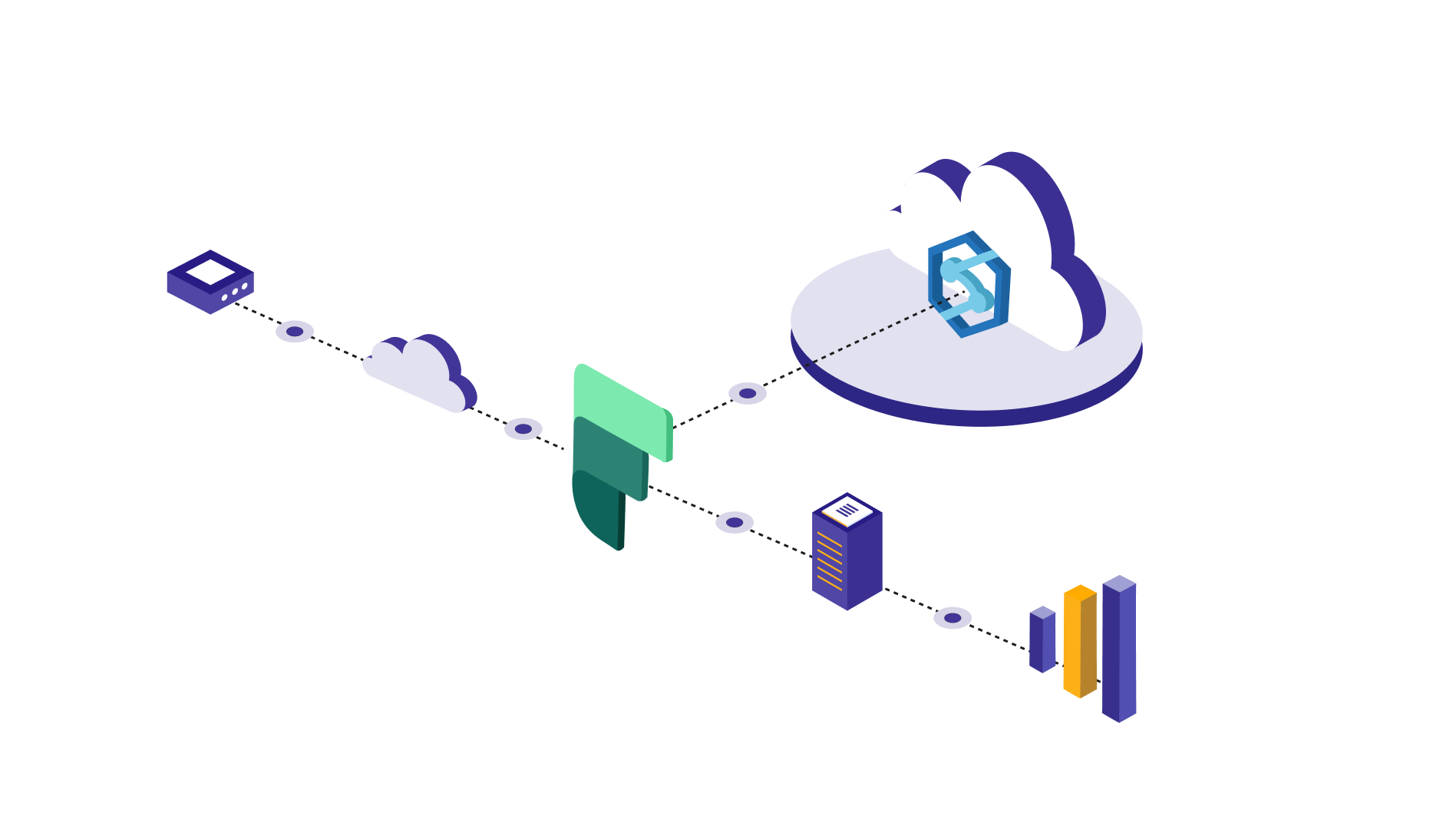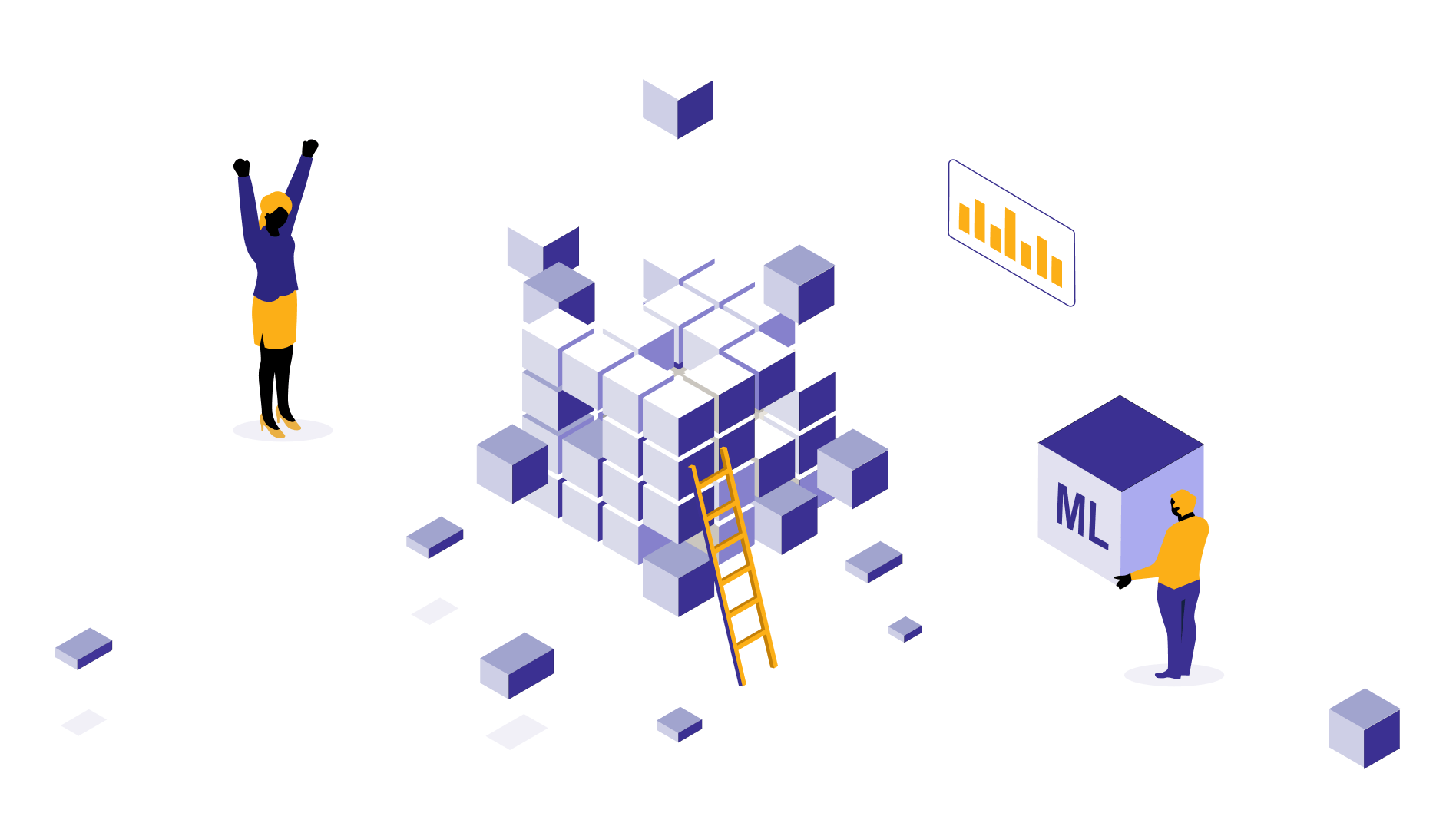Is Microsoft Fabric another Azure Synapse? Find out.
Our data engineering team has answered the most burning questions about the topic - Microsoft Fabric vs. Azure Synapse. Jump into the section to know how different these Microsoft tools are and if you should switch from synapse to Fabric.

Suresh
June 17, 2024 |
8 mins

Microsoft Fabric vs Synapse - A rewind
When Azure Synapse was released back in 2019, it created waves for being an all-in-one analytics and data warehousing solution. The data engineering community was amazed by how it was multi-functional (like a Swiss knife), clubbing different workloads like data ingestion, storing, visualization, etc.
Fast forward to 2023, another mightier and more versatile tool has ushered in - The brand-new Microsoft Fabric. And suddenly, everyone went like - Oh Fabric is here to revolutionize and replace Azure Synapse. Arun Ulag, the corporate VP of Azure data, claims Fabric is the next version of Azure Synapse. It’s much more advanced than its predecessors. It’s a one-stop shop for all things' data. It’s been months, but the noise isn’t subdued.
Well! Some of the above claims are true.
Having worked with both MS Fabric architecture and Synapse, our data engineering team shed light on this. They broke both tools down, compared, analyzed pros and cons, and shared their insights on Microsoft Fabric vs Synapse debate, which is what you’ll read further.
Things are about to get dirty. So, buckle up!
Difference between Azure Synapse and Microsoft Fabric
Factors | Azure Synapse | Microsoft Fabric |
Architecture | Evolved from SQL warehousing, Synapse is built on top of ADLS Gen 2 with workloads like Azure machine learning, Power BI, data lake and warehousing. For efficient querying of data and machine learning applications, Synapse employs dedicated SQL pools with massive parallel processing and columnar storage capabilities. It also comes with Apache Spark pools and serverless SQL pool to simplify big data processing. | Considered to be a successor of Synapse Analytics, Microsoft Fabric is a SaaS platform. Unlike Synapse, Fabric is built on top of one lake architecture and is a SaaS platform that combines all data experiences in one environment. It doesn’t have dedicated SQL pool storage like Synapse and stores data in delta parquet format within the one lake. |
Capabilities | Being a data warehousing solution that offers the best of breed of SQL technologies, Azure Synapse comes with the following experiences. It helps with traditional warehousing and big data processing capabilities and integrates smoothly with Azure data lake storage, Coso DB, and relational databases. To interact with these storage sources, you could use dedicated and serverless SQL pools, along with Apache Spark pools. Power BI allows data visualization also. | Synapse is more of a unified analytics platform but Fabric is more than that. Every data workload you might possibly need is present in Microsoft Fabric. You can build data pipelines and ingest data from external sources, perform real-time analytics and visualization and collaborate with data scientists to build machine learning models. |
Components | Azure Synapse comes with components: Traditional warehousing and big data processing capabilities. Integrates with Power BI and Azure machine learning to visualize your data insights and build seamless ML models. Synapse SQL with both dedicated and serverless querying systems. Comes with Azure Synapse data explorer for log & telemetry analysis to collect real-time analytics data from different applications. Pipelining & ETL through integrations with ADF. Azure Synapse studio as a unified environment to perform data orchestration, integration, monitoring, etc. | Some of its workflows include the following. Data factory which comes with data pipelines and workflows to ingest data from different sources. Synapse data engineering to maintain data in a Lakehouse environment, run batch or streaming Spark jobs using Spark job definitions, maintain notebooks, and access 200+ connectors through data pipelines for data orchestration. Power BI - To visualize data and create reports. Synapse data science to build machine learning models. It can integrate with Azure machine learning, helping users to maintain model registries and track experiments. Real-time analytics to serve extracted insights with relevant business users. Data activator to set up and automate triggers when specific actions are noticed. |
Suitable for which kind of companies? | Since Azure Synapse is great for large data analytics, it’s preferable for big organizations with matured data architecture. | Microsoft Fabric is an all-encompassing platform and is perfect for all types of organizations. |
Maintenance requirements | Since it’s a PaaS platform, it requires more maintenance and configuration setups. | Being a SaaS platform, Microsoft Fabric is quick to set up and easy to use. |
Overlapping features | Data engineering, data warehouse, data science, and real-time analytics. |
|
Learn more: Is Microsoft Fabric replacing Power BI?
Should I migrate from Azure Synapse to Microsoft Fabric?
In short, almost every feature available in Azure Synapse is also available in Microsoft Fabric solutions. But the latter has a few new modifications and enhancements, making it look like Azure Synapse is a part of Microsoft Fabric. If you are using Azure Synapse now for big data analytics and data warehousing, you will still be covered for that if you move to Fabric.
If your company only needs a big data analytics and warehousing solution and has already invested in Azure Synapse, you can continue using that.
But if you want the advanced tech stack from Microsoft, all bundled in a one SaaS package, and are ready for an upgrade, then Microsoft Fabric might be a good choice.
Other than the additional features like data activator, Microsoft 365, One lake storage, etc, Microsoft Fabric is also better for scalability. It makes collaboration easier within your data teams and puts an end to issues like data duplication.
Another feature which got data experts talking about is virtualization of external storage within the Fabric environment. You could create shortcuts of data and access them for Fabric workloads, while the data actually resides outside the Fabric.
But for Azure Synapse users, it can take some getting used to, since Fabric user interface is quite new.
Our data engineers noticed how they couldn’t use mapping data flows (MDF) on Fabric, which was a major function on Synapse for data ingestion. Instead, they had to use data flows from ADF on Fabric. (which is quite good too).
Besides, there are certain functionalities that you used in Synapse that aren't available in Fabric. For example, you can use Azure Synapse studio in Fabric. And complexities with T-SQL queries because of unavailability of a few functions. Example: OPENROWSET, PREDICT, MERGE, TRUNCATE, etc. Check here for the entire list of command limitations.
This shouldn’t be a big concern to you as Microsoft is constantly adding new cool features to the product. Unless you are performing a manual migration from Synapse to Fabric, where you will have to modify notebooks containing functions like OPENROWSET(). Right now, there isn’t any automatic upgrade available from Azure Synapse to Microsoft Fabric.
Another important consideration is that fabric might not support data from Azure Synapse if they are not in parquet format. So, you will need to take care of this too, if your current architecture isn’t lake first.
The verdict is that migration from Azure Synapse to Microsoft Fabric heavily depends on your expectations, budget, and data initiatives. And there is a cost that has to be discussed with your stakeholders. (Microsoft Fabric charges you based on the capacity used, unlike Synapse that charges for pay-per-query.
So, it’s better to audit which tool is suitable for your team through a call with data experts. Click here to talk to one of us.
Learn more: Benefits of Microsoft Fabric
Is Microsoft Fabric replacing Azure Synapse?
Let’s hear it from Microsoft so we can be reassured.

Source: Microsoft Fabric, explained for existing Synapse users
According to Microsoft, there are no plans to shut down Azure Synapse in any near future. So, companies can continue using Synapse products and pay for resources they use without worrying about losing their years of progress.
You can also check out Snowflake vs Microsoft Fabric comparison blog, a detailed guide that can help you navigate what to choose and for what purposes.
All of these prove that Microsoft Fabric might be an unofficial successor to Azure Synapse. But one tool cannot replace the other, and it boils down to what organizations need to manage their data workloads. datakulture offers data engineering, visualization, and data pipeline services and get top engineers and architects work on your data projects.

by Suresh
Suresh, the data architect at datakulture, is our senior solution architect and data engineering lead, who brings over 9 years of deep expertise in designing and delivering data warehouse and engineering solutions. He is also a Certified Fabric Analytics Engineer Associate, who plays a major role in making us one of the early adopters of Fabric. He writes in words whatever he delivers with precision to his clients, consistently voicing out trends and recent happenings in the data engineering sector.



